It is assumed that Royston Cave was created around 1350. However, only the date of its rediscovery in 1742 is known for certain. If it was a secret hiding place, Royston Cave lives up to its purpose. For it fell into total oblivion. All lore was wiped out. But the day a worker at Royston’s butter market rolled aside a millstone and discovered the deep shaft, the mystery of Royston Cave began. A candle was placed in the hand of a young boy passing by. Tied to a rope, he had the job of looking in. To the disappointment of the residents, the boy reported no treasure. What the boy was able to see after centuries in hiding, visitors today can visit a little more comfortably. As early as 1790, a side tunnel was dug for easier access to the cave.
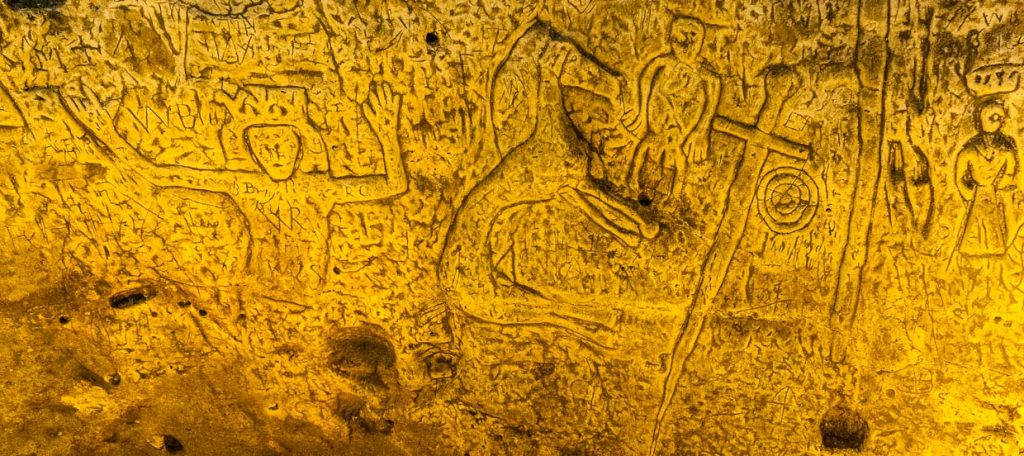
Random discovery at the butter market
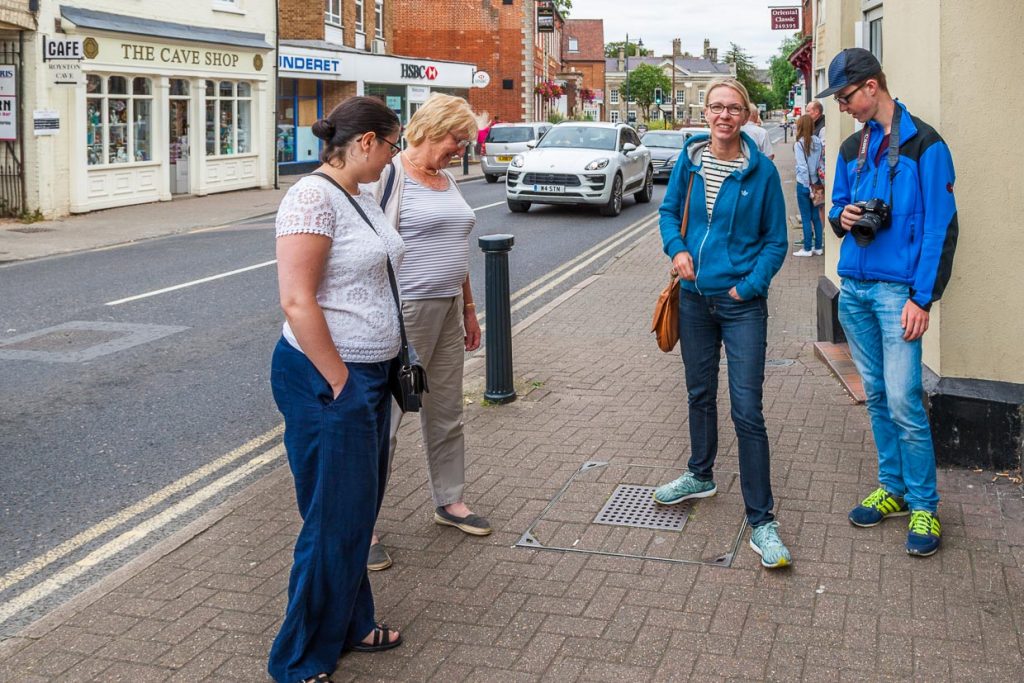
Scary feelings permitted
A tunnel with a handrail leads eight meters down into the depths. The walls are dimly lit by flickering light. The cave is only five meters in diameter and its shape resembles that of a beehive. On the walls there is a real panopticon of creepy images. The guide increases the feeling of having arrived in the darkest Middle Ages and explains some of the figures carved into the limestone. In the throng of stick figures, symbols and decorations, he points with a green laser pointer to a female figure holding a wheel. It is St. Catherine of Alexandria, one of the four important holy virgins. In her hand she almost triumphantly holds the instrument of torture intended for her, a breaking wheel. She was only 18 years old when she became a martyr. The crushing wheel was only the prelude to the execution of the death penalty. It was thrown at the legs and then at the arms to break them.
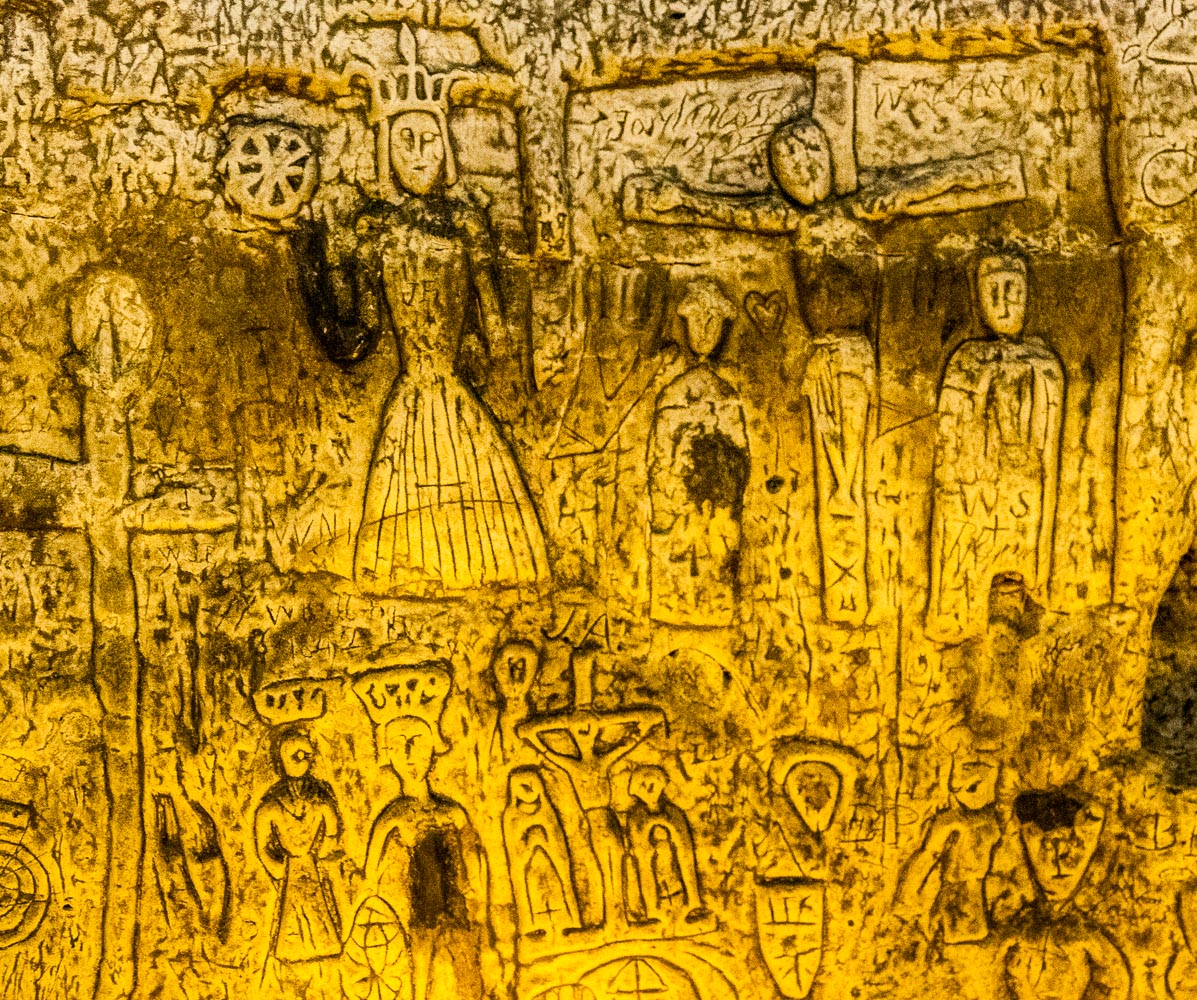
In another place, St. Lawrence of Rome can be seen. His martyr fate is similarly cruel. He was bound on a red-hot iron grate for distributing the city’s church wealth to the poor. In addition, there are various crucifixion scenes, many crowned and uncrowned figures, a palm with an engraved heart or a dove. Among the gruesome Christian scenes, there are also repeated pagan images such as the carving of a horse or a fertility symbol. Another depiction shows a figure holding a skull in the right hand and a candle in the left. According to interpretations, this indicates an initiation ceremony. The variety of signs and symbols has been the breeding ground for a handful of theories about Royston Cave for centuries.
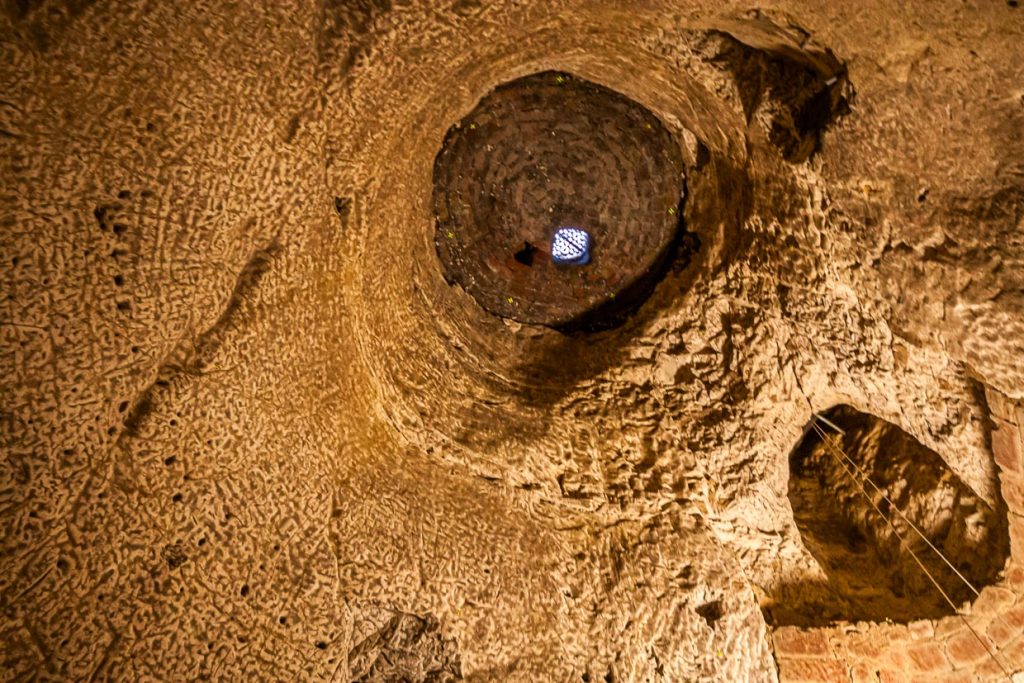
Knight Templar, Freemason, Hermit or Lady?
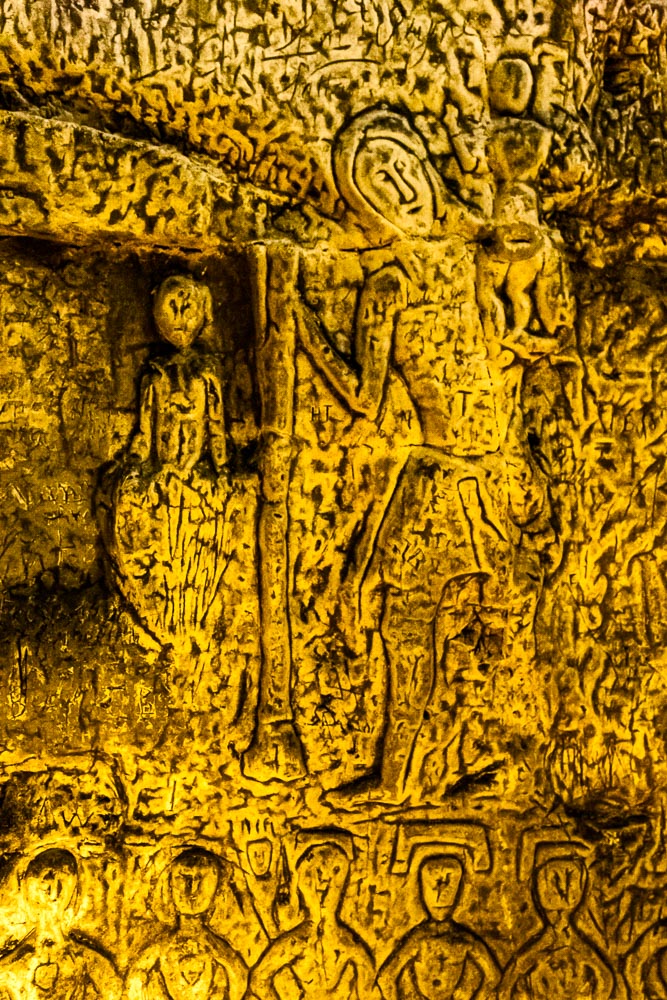
The most popular theory is that of the Knights Templar. The Templars had a base in Baldock, about 12 kilometers from Royston. They frequently visited Royston to sell goods at the market. So it would be possible that the Knights Templar used the cave as a secret place of worship and storage.
Another theory sees the cave as one of the first lodges of the Freemasons in England. The thesis is based on the connection between James I King of England and Scotland and Freemasonry. Since Jacob owned a castle in Royston and regularly visited the town for hunting, this theory assumes that the king used Royston Cave to practice Freemasonry away from the prying eyes of his court.
The third theory interprets the cave as the retreat of a hermit. In the early Middle Ages, it was common to build hermitages along roads. The religious principle of solitude as a smart business model, so to speak. Travelers paid the hermit to pray for their safe passage. Perhaps an engraving was added to the prayer when a certain amount of money was donated? This could explain the countless small figures in the cave.
Theory number four sees in the cave the private chapel of Lady Roisia, from whose name the town name Royston is probably derived. She was the wife of William the Conqueror’s steward and owned extensive lands in the area. It is believed that Lady Roisia had a stone cross erected at the crossroads of Royston and used the cave as her private chapel. In any case, the importance of this crossroads is well documented. This is where the Icknield Way, a historic path that runs along the southern chalk coast of England from Norfolk to Wiltshire, and Ermine Street, a Roman road that originally ran from London to York, met.
Theory number five leads into the world of lay research. Esoterically inclined people claim that the cave lies at the intersection of two ley lines. These straight-line landmarks connect prehistoric cult sites, menhirs, sacred springs or churches. One of these lines of spiritual power, the Michael Line, runs through Royston and also passes through Stonehenge and Avebury.
Eternal Enigma
To date, none of the theories has been able to gain acceptance. Too much is contradictory and does not fit together in time. Except for the carvings in the rock, there is no comparative material in the cave that could help in the historical classification. Thus, historians are entirely dependent on the comparison of figures and symbols at other historical sites. But who is to say whether, after the rediscovery in the 18th century, a few pagan or Christian graffiti were not added to fuel the myth of Royston Cave? So the cave in Hertfordshire remains an unsolved mystery for all visitors to make their own sense of. And that’s what makes the visit really exciting.
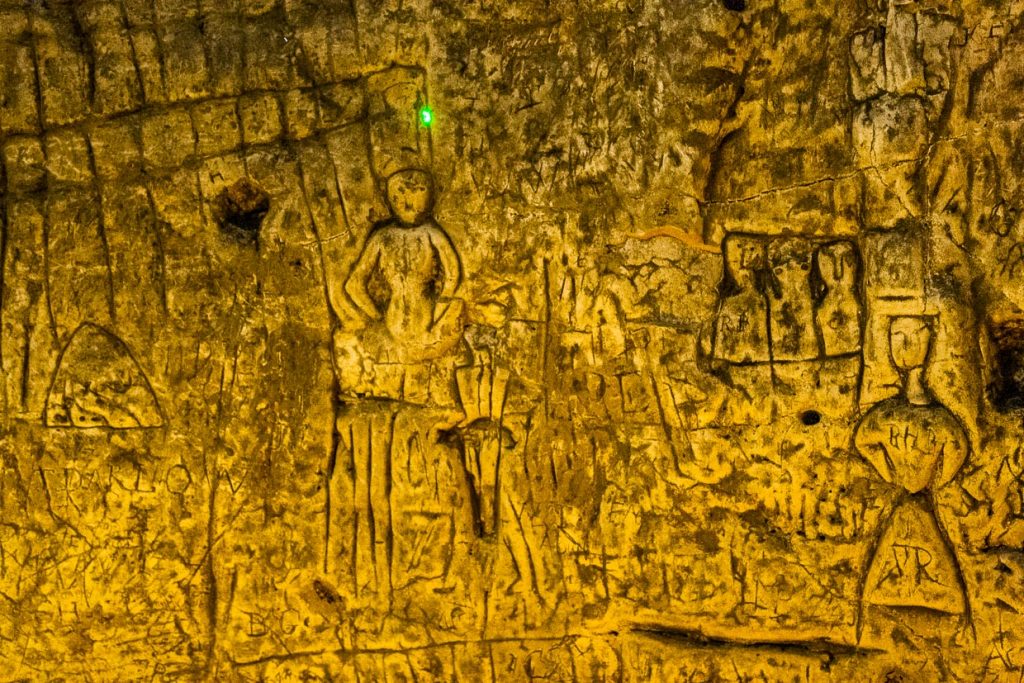
The town of Royston in the county of Hertfordshire lies on the train route between London Kings Cross and Cambridge. From Cambridge, it is a 20-minute train ride. From London to Royston, the journey time is about 50 minutes. Royston Cave is only an 8 minute walk from the train station. More information about Royston Cave.
360 degree view of Royston Cave

